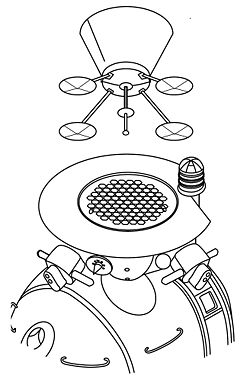This page needs to be proofread.
1.5.3 L2 Mission Descriptions
None of the planned L2 missions reached orbit.
| Launch failure | June 27, 1971 | |
| The launch shroud of the third N-1 to be launched (number 61) covered L2 and L3 test articles, and was topped by a dummy launch escape system. Immediately after liftoff, eddies developed in the exhaust streams of the 30 NK-15 engines in the N-1 first stage; this, coupled with roll control and aerodynamic inadequacies, allowed the rocket to roll about its long axis. At 48 sec, the rocket began to disintegrate under the torque generated by the roll. The top part of the N-1, including the test articles, fell off. It crashed near the N-1 launch pad, while the lower part of the rocket flew on. At 51 sec, the engine control system automatically shut down the first stage engines. The lower stages impacted 20 km downrange and exploded, gouging a crater 30 m wide. | ||
| Launch failure | November 23, 1972 | |
| The launch shroud of the fourth N-1 to fly (number 71) contained an L3 mockup and a prototype L2. Ninety sec into the flight, the six central engines in the first stage shut down as planned. At 104 sec, lines leading into the deactivated engines burst under pressure from backed-up kerosene fuel. Kerosene spilled on the still-hot engines. The last N-1 to fly exploded 107-110 sec after liftoff, just 40 sec before planned first-stage separation. Another account traces this failure to a foreign object in the number 4 engine oxidizer pump, making it a near-replay of the failure which destroyed N-1 number 51 in July 1969. The launch escape system plucked the descent and orbit modules of the L2 free of the N-1. This L2 was the last Soyuz variant to launch on a rocket other than the Soyuz launcher. | ||

